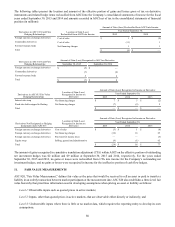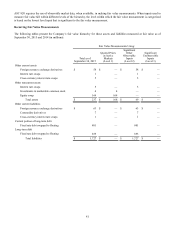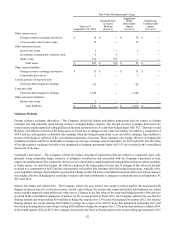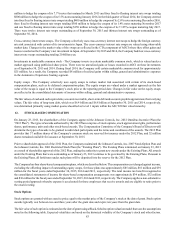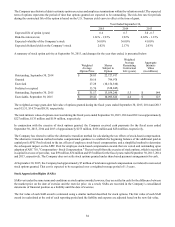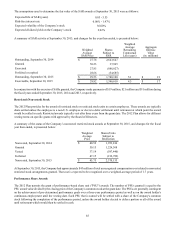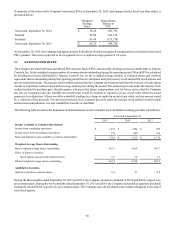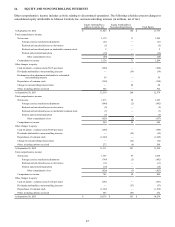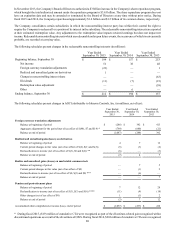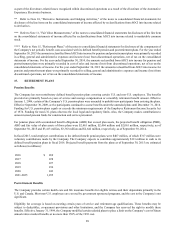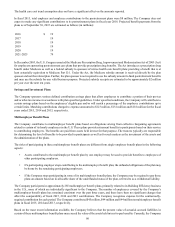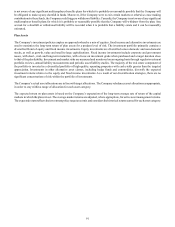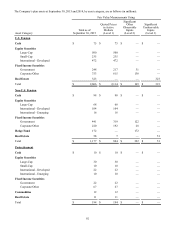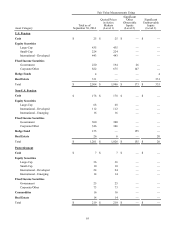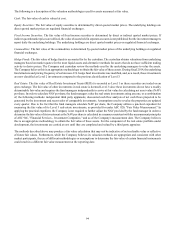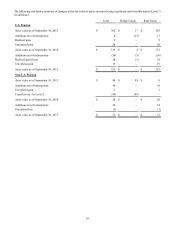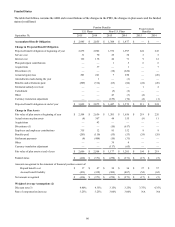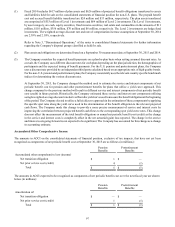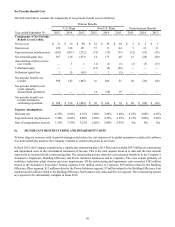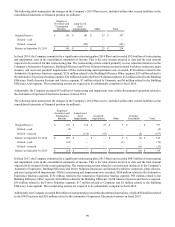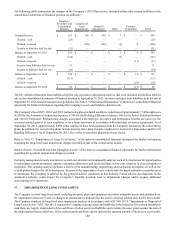Johnson Controls 2015 Annual Report Download - page 90
Download and view the complete annual report
Please find page 90 of the 2015 Johnson Controls annual report below. You can navigate through the pages in the report by either clicking on the pages listed below, or by using the keyword search tool below to find specific information within the annual report.
90
The health care cost trend assumption does not have a significant effect on the amounts reported.
In fiscal 2015, total employer and employee contributions to the postretirement plans were $8 million. The Company does not
expect to make any significant contributions to its postretirement plans in fiscal year 2016. Projected benefit payments from the
plans as of September 30, 2015 are estimated as follows (in millions):
2016 $ 19
2017 19
2018 19
2019 19
2020 19
2021-2025 79
In December 2003, the U.S. Congress enacted the Medicare Prescription Drug, Improvement and Modernization Act of 2003 (Act)
for employers sponsoring postretirement care plans that provide prescription drug benefits. The Act introduces a prescription drug
benefit under Medicare as well as a federal subsidy to sponsors of retiree health care benefit plans providing a benefit that is at
least actuarially equivalent to Medicare Part D.1. Under the Act, the Medicare subsidy amount is received directly by the plan
sponsor and not the related plan. Further, the plan sponsor is not required to use the subsidy amount to fund postretirement benefits
and may use the subsidy for any valid business purpose. Projected subsidy receipts are estimated to be approximately $2 million
per year over the next ten years.
Savings and Investment Plans
The Company sponsors various defined contribution savings plans that allow employees to contribute a portion of their pre-tax
and/or after-tax income in accordance with plan specified guidelines. Under specified conditions, the Company will contribute to
certain savings plans based on the employees’ eligible pay and/or will match a percentage of the employee contributions up to
certain limits. Matching contributions charged to expense amounted to $123 million, $132 million and $118 million for the fiscal
years ended 2015, 2014 and 2013, respectively.
Multiemployer Benefit Plans
The Company contributes to multiemployer benefit plans based on obligations arising from collective bargaining agreements
related to certain of its hourly employees in the U.S. These plans provide retirement benefits to participants based on their service
to contributing employers. The benefits are paid from assets held in trust for that purpose. The trustees typically are responsible
for determining the level of benefits to be provided to participants as well as for such matters as the investment of the assets and
the administration of the plans.
The risks of participating in these multiemployer benefit plans are different from single-employer benefit plans in the following
aspects:
• Assets contributed to the multiemployer benefit plan by one employer may be used to provide benefits to employees of
other participating employers.
• If a participating employer stops contributing to the multiemployer benefit plan, the unfunded obligations of the plan may
be borne by the remaining participating employers.
• If the Company stops participating in some of its multiemployer benefit plans, the Company may be required to pay those
plans an amount based on its allocable share of the underfunded status of the plan, referred to as a withdrawal liability.
The Company participates in approximately 285 multiemployer benefit plans, primarily related to its Building Efficiency business
in the U.S., none of which are individually significant to the Company. The number of employees covered by the Company’s
multiemployer benefit plans has remained consistent over the past three years, and there have been no significant changes that
affect the comparability of fiscal 2015, 2014 and 2013 contributions. The Company recognizes expense for the contractually-
required contribution for each period. The Company contributed $45 million, $44 million and $44 million to multiemployer benefit
plans in fiscal 2015, 2014 and 2013, respectively.
Based on the most recent information available, the Company believes that the present value of actuarial accrued liabilities in
certain of these multiemployer benefit plans may exceed the value of the assets held in trust to pay benefits. Currently, the Company


